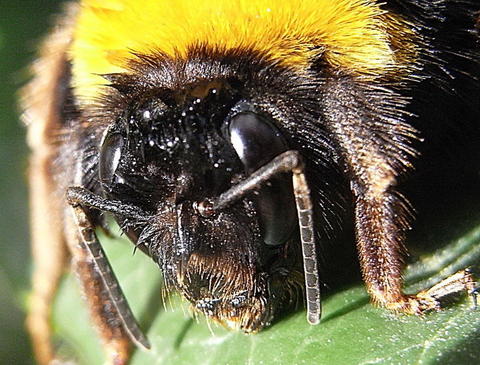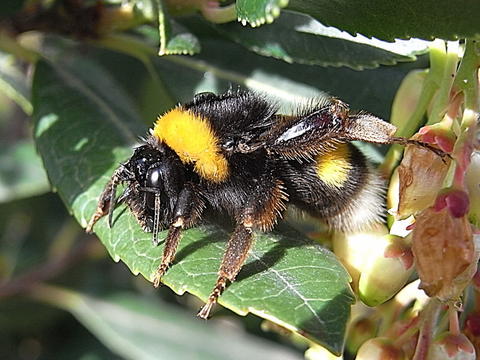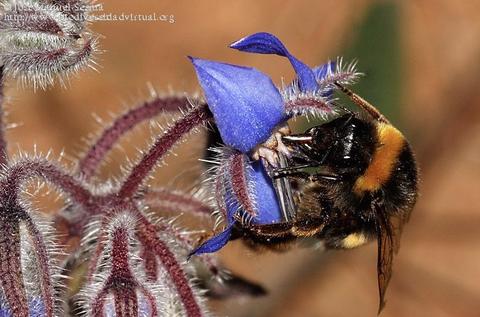Bombus terrestris
Bombus terrestris is a large size bumblebee (Queens: 20-23 mm. Lesser and variable size in workers).
It shows a complex and not well known phenological cycle. However it is a species whose any other features are well known, with much literature.



Females emerge from hibernation relatively soon, in spring, and visit catkins from diverse species, namely, willows, maples and acacias. They build a subterraneous nest, in cavities where They arrive by a long tunnel, whose entry is situated between the trash.
The colonies, between the most populous, in its maximum development, reach hundred of individuals. When the workers emerge, who are different sized depending on the season, They do different functions in their society. The Queen is responsible of the ovoposition. It exist a hierarchy between the colony components
The flight period last from late March to early November. However, the fact of encountering some females of subspecies in winter is due to the possibility of having two phenological cycles.
The most frequent habitats are those bare ground, more rarely high mountain. It shows a wide spectrum of feeding.
Big size queen, lesser in workers. Sturdy body, short headed, due to its malar gap shorter than its distal width. The labrum's tubercles are well marked, provided of homogeneous stipple, with big dots. The labrum's groove is narrow. The clypeus is convex, short, with intense stipple and close dots. Stipple in the forehead is extensive, and defined with different size dots. The hind legs show a weakly crosslinked tibia, hairless in its dorsal side.
The genitalia show external projections of the sting's case, that are narrow, but dilate in the dorsal side. The internal projections are sclera-like.
Male: 12-16 mm. Big size. Short head, like the female. Large jaws with long and dense beard. Short malar gap, transverse, with thin stipple. Supraorbital line is tangent with the lateral ocellus. Short antenna; A3 is larger than A4 and about equal than A5 . Middle basitarsus relatively wide. In the hind legs, tibia is almost convex. The basitarsus, in its middle zone is long and widened. Short E7 with a terminal prominence. E8 similar to other species in the subgenus, wide, short, but slightly concave in the distal side.
Coloration is both in female and male relatively to the subspecies.
This species is distributed from the North Europe to Africa. Eastward from Turkestan to the Canary Islands, from 0 to 3.000 m.
It has been introducen in Chile, New Zealand, Tasmania and Japan.
Potential distribution map at the present time
Potential distribution map in 2050 with the same level of pollution emission and the climate changes consequence of these contamination levels
Map legend
Maps are made with GBIF data of this specie in Iberian Peninsula